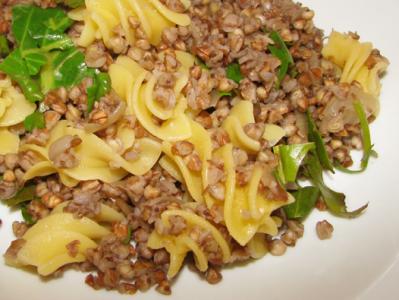Buckwheat Enhanced Gluten-free Bread a Healthier Gluten-free Alternative
Researches from the Polish Academy of Sciences recently published a study suggesting substituting some or all of the corn starch in many traditional gluten-free bread recipes with buckwheat flour. In addition to providing higher levels of antioxidants, B vitamins, magnesium, phosphorus and potassium, the study indicated that swapping 40% of the corn starch for buckwheat flour also increased its “overall sensory quality” when compared to the gluten-free bread used in the control. Although recipes were tested with anywhere from 10-40% buckwheat flour, the conclusion clearly points to the 40% buckwheat flour results as having the most nutritional benefits for celiac sufferers.
International Journal of Food Science and Technology, October 2010; 45(10):1993–2000. Epub August 25, 2010.



